- Home
- Joseph Bruchac
Two Roads Page 25
Two Roads Read online
Page 25
It was a period when, after the stock market crash of 1929, average family income dropped by 40 percent. There were over two million homeless, people of every social class and background, living in shantytowns called “Hoovervilles” and hopping freight trains as hoboes. Among those hoboes were no fewer than 250,000 teenagers—whose story was dramatically chronicled in a 1997 PBS documentary called Riding the Rails.
* * *
• • •
The life of the hobo, including hopping freight trains and living temporarily in shantytowns near the tracks called jungles, might be said to have begun a century and a half ago after the Civil War. That was when large numbers of out-of-work men, most of them veterans, used those trains as the fastest way to go—often West—in search of jobs.
It’s important to recognize—as my late friend the folk singer and social activist Bruce (Utah) Phillips—always pointed out to me—that a hobo is neither a bum nor a tramp. Hoboes are essentially migrant workers, impoverished homeless people who will readily accept employment and pride themselves on being honest. Tramps, who only work when forced to, and bums, who refuse to work at all, are looked down upon by real hoboes.
The nomadic life of a hobo, a “Gentleman of the Road,” experienced by my main character and his father, actually did include that “ethical code,” which Cal likes to quote. It’s been a popular, often romanticized subject in song and story. I grew up hearing such songs as “Hallelujah, I’m a Bum,” “The Big Rock Candy Mountain,” and the Kingston Trio’s “Fast Freight.” There are many books about the hobo life, from Jack London’s The Road (1907) to Citizen Hobo by Todd DePastino (2003).
* * *
• • •
Nineteen thirty-two was also when an almost forgotten event took place, which precipitates the action in this story—Cal’s father leaving him to join the “Bonus Army.” Forty-five thousand veterans of World War I—men like my main character’s pop—set up camp that summer in the nation’s capital. These men had been promised eight years earlier a bonus payment based on their service to the nation. Called the “Bonus Army” by the press, their weeks of peaceful protest saw white men and black men from all over America marching and living together in a common cause as they petitioned Congress. It may be seen, perhaps, as a forerunner of the Civil Rights movement and later marches on Washington. The whole story of this American epic is memorably told in The Bonus Army (2004) by Paul Dickson and Thomas B. Allen.
However, these veterans were labeled as Communists, impostors, and insurrectionists by President Herbert Hoover who sent his Army Chief of Staff, General Douglas MacArthur, to evict them by force, including mounted cavalry and tanks on July 28, 1932.
Widely condemned by the American public, that brutal treatment of peaceful American veterans was a factor in the election of Franklin Roosevelt—who promised a “New Deal” for the country—as president that fall. (It is estimated that Roosevelt’s WPA program alone employed 8 million between 1932 and 1940.)
* * *
• • •
The other major element in Cal’s story is the Challagi Indian Boarding School. Although the Challagi school is a fictitious one, it is patterned after an actual Indian school in Oklahoma, the Chilocco Indian Agricultural School. Anyone wishing to understand more about Indian boarding schools in the early twentieth century should read K. Tsianina Lomawaima’s excellent book They Called It Prairie Light, The Story of Chilocco Indian School.
This is the fifth book I’ve written in which federal Indian boarding schools play a central role—including my biographical novel Jim Thorpe, Original All-American, and Code Talker. Although the Carlisle Indian School, established in 1879, was the first off-reservation Indian boarding school, mission schools subsidized by the federal government first began around 1810. My young adult novel Walking Two Worlds tells the story of the struggles of Ely Parker/Hasanoanda at such a school in the early nineteenth century.
The objective of such schools was not just to educate Native Americans. It was to solve what the government called “The Indian Problem.” Rather than continuing to fight expensive Indian Wars—fought again and again because Native Americans stubbornly refused to give up their lands—schools could be used to assimilate and acculturate. As Richard Henry Pratt, founder of Carlisle put it, to: “Kill the Indian and save the man.” In other words, cultural genocide.
These schools were largely paramilitary institutions in which Native students were stripped of their native languages and cultural identities, drilled, dressed in uniforms, and separated from their families for years at a time. There was often abuse and harsh punishment. In the four decades of its existence, more Indian students ran away from Carlisle than graduated. When The Problem of Indian Administration by Lewis Meriam came out in 1926 it laid bare the awful conditions found to a greater or lesser degree in all of the dozens of federal Indian boarding schools. Overcrowding, unsanitary conditions, unqualified staffing, near-slave labor were among its findings.
Not only that, even after the Meriam Report—which did produce positive changes—recommended that Indian students be educated at community schools near their homes, Indian boarding schools continued to grow. By the early 1970s, some sixty thousand or more Native Americans were attending boarding schools. It was only after the 1970s that such boarding institutions were largely abandoned to finally be replaced by community-based schools.
For Native kids—often taken by force—arriving in one of those faraway schools was a terrible change from the loving support of their family environment. Yet, as Jack Thorpe, son of the famous American Indian athlete Jim Thorpe, put it to me, “Even though Dad had been in Indian boarding school himself, that was where he sent me and my brothers.”
Why, if life at Indian school was so draconian, would Jim Thorpe in real life and Will Blackbird in my novel deliberately send their sons to an Indian boarding school? Why, in fact, did so many graduates of Indian boarding school not only send their kids to such schools, but also praise their own experience.
The answer can be found not so much in what was intended by the creators of these schools as in what the Indian students themselves made of the institutions. As Lomawaima so succinctly put it in They Called It Prairie Light, “Indian people made Chilocco their own.” Rather than being made “less Indian,” the Indian schools actually served to confirm their Indian identity, not just as members of a particular tribal nation, but in a Pan-Indian sense. This identity was strengthened not in the classroom but in their interactions with other Native students. This was especially so by the 1930s when many Native students, like Cal, came to the boarding schools already speaking English and knowing little or nothing about their original tribal communities.
Some already knew what they wished to gain from an Indian boarding school—for example, agricultural skills that could be used on their farms or trades so they could make money in the larger economy now that traditional ways of subsistence were no longer viable. They made use of the boarding schools as places where they would not be assimilated or acculturated—as Pratt and others intended—but given the tools to adapt, survive, and even thrive.
More than anything else, surrounded by other Native students who often became lifelong friends or spouses, they could feel Indian, exist within a sort of new family that would take the place of their family of origin. Although Native languages were forbidden, they were spoken when no white teachers and staff could hear them.
Though I never attended an Indian boarding school, many of my generation did and the stories they told me bore out the powerful undercurrent of Native identity found in those institutions. Barney Bush, a Shawnee poet, chuckled about how they used to steal the bass drum from the band room, go up in the hills above the school, and play powwow songs. Phil George, a Nez Percé traditional dancer and tradition bearer—who also served in Vietnam—told me some of the best stories he learned were from other Native kids when they were locked toget
her in the school basement for punishment.
Louis Little Coon Oliver (1904–1991), a Creek elder I met when he was in his seventies, told me similar tales about his time in Indian schools. I had the honor of being his editor and publisher when his first book of poetry came out in 1983. After leaving Bacone Indian University, Louis rode the rails and hitchhiked all over America before returning to live out his life in Tahlequah, Oklahoma. The character of Little Coon in this novel is meant as a tribute to Louis, who always found something to joke about—at the same time as he was teaching. He would make you laugh in a way that also made you stop and think.
It’s my hope that this small novel—based not just on years of research but also on the countless stories of boarding school life I’ve heard over the last five decades from friends and elders who were kind enough to share them with me—will do the same. Entertain with a good story while also, though not in a preachy way, teaching something about parts of American and Native American history that should be better known.
About the Author
Joseph Bruchac is a highly acclaimed children's book author, poet, novelist, and storyteller, as well as a scholar of Native American culture. His work has appeared in hundreds of publications, from Akwesasne Notes and American Poetry Review to National Geographic and Parabola. He has authored many books for adults and children, including Code Talker: A Novel About the Navajo Marines of World War Two, Skeleton Man, and The Heart of a Chief.
What’s next on
your reading list?
Discover your next
great read!
* * *
Get personalized book picks and up-to-date news about this author.
Sign up now.

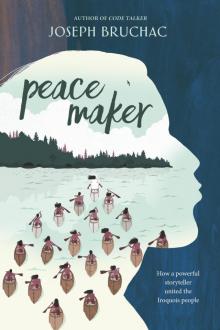 Peacemaker
Peacemaker Talking Leaves
Talking Leaves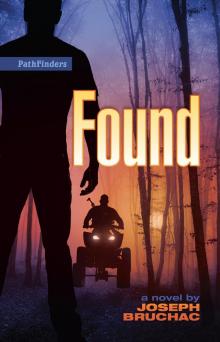 Found
Found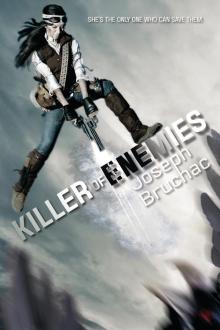 Killer of Enemies
Killer of Enemies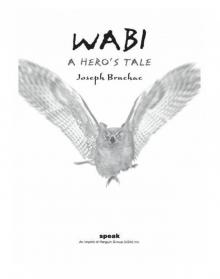 Wabi
Wabi Rose Eagle
Rose Eagle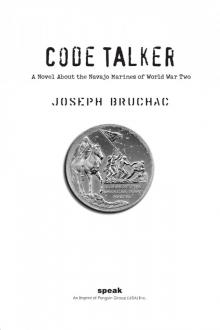 Code Talker
Code Talker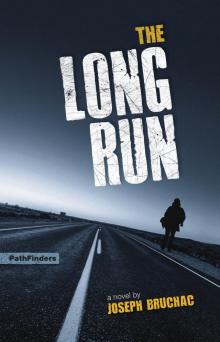 The Long Run
The Long Run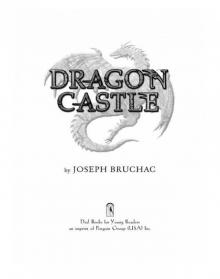 Dragon Castle
Dragon Castle The Return of Skeleton Man
The Return of Skeleton Man Pocahontas
Pocahontas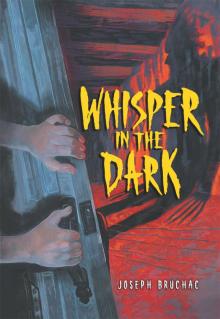 Whisper in the Dark
Whisper in the Dark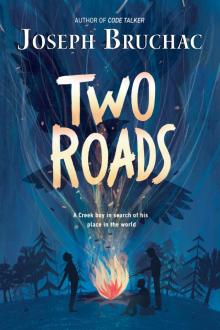 Two Roads
Two Roads Brothers of the Buffalo
Brothers of the Buffalo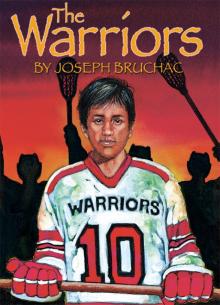 The Warriors
The Warriors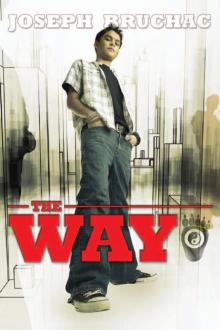 The Way
The Way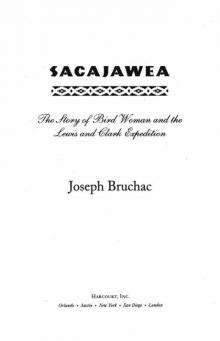 Sacajawea
Sacajawea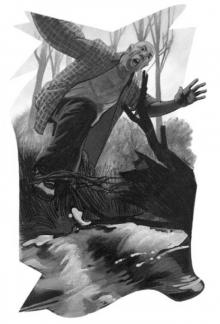 Night Wings
Night Wings March Toward the Thunder
March Toward the Thunder Bearwalker
Bearwalker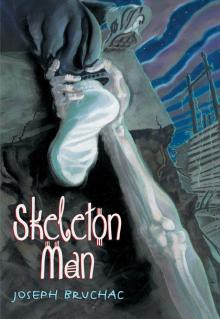 Skeleton Man
Skeleton Man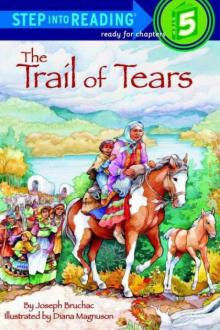 The Trail of Tears
The Trail of Tears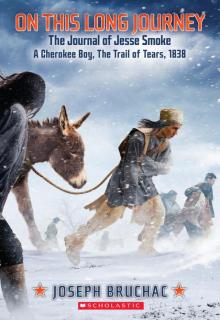 On This Long Journey
On This Long Journey Flying with the Eagle, Racing the Great Bear
Flying with the Eagle, Racing the Great Bear